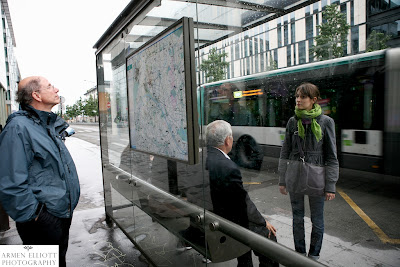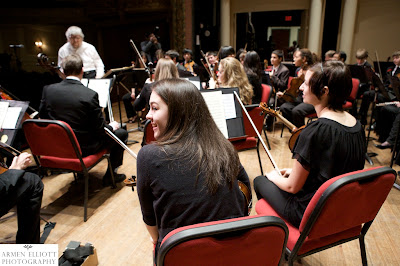My husband and I went to Paris to retrieve my daughter after her year studying at the Sorbonne. We rented a flat near the Saint-Martin Canal and used the Métro and buses to explore the city (much easier when your daughter is your personal tour guide).
I got "the Eiffel Tower that ate Paris" effect when I used my 17mm wide angle lens.
I loved the curved, well-worn wooden staircase in our apartment building, polished by centuries of use.
One of the first places we visited was the
Centre Pompidou, which houses the Bibliothèque publique d'information, a vast public library, the Musée National d'Art Moderne which is the largest museum for modern art in Europe, and IRCAM, a music and acoustic research center.
This Métro subway entrance is a whimsical example of Paris' wonderful public art.
One of the grand public spaces near the Palace of Versaille.
This bridge is a famous spot for lovers who leave locks with their initials engraved on them.
La Cartoucherie is a complex of five theaters (Théâtre du Soleil, Théâtre de l'Aquarium, Théâtre de la Tempête, Théâtre de l'Epée de Bois, and the Théâtre du Chaudron) in a former munitions factory. It lures both cast and spectators into an intimate theatrical world. The resident director is the revered Ariane Mnouchkine. Go early for a simple meal; actors often help serve "in character."
 |
| Inside another spectacular church in Paris. |
 |
| Looking like tourists in front of Notre Dame Cathedral. |
Eglise St-Etienne-du-Mont in
Paris is an attractive Gothic church with some unique features inside and out. Its construction spanned more than a century -- between 1492 and 1626. The church was once part of an abbey dedicated to the patroness of Paris (St. Genevieve).
 |
| The exhibit depicted five stories illustrating basic fundamental rights: land, identity, housing, health and safety, in India, Macedonia, Nigeria, Egypt and Mexico. |
 |
| We walked among the graves of Pere Lachaise, one of the most famous cemeteries in the world. It is reputed to be the world's most-visited cemetery, attracting hundreds of thousands of visitors annually to the graves of those who have enhanced French life over the past 200 years, including Edith Piaf, Frederic Chopin, Marcel Proust, Oscar Wilde, Maria Callas -- and the Doors' Jim Morrison. |
Fresh flowers are placed daily on the composer Chopin's grave by lovers of his music, even 160 years after his death.
Stay tuned for "Paris, Part II".









































































